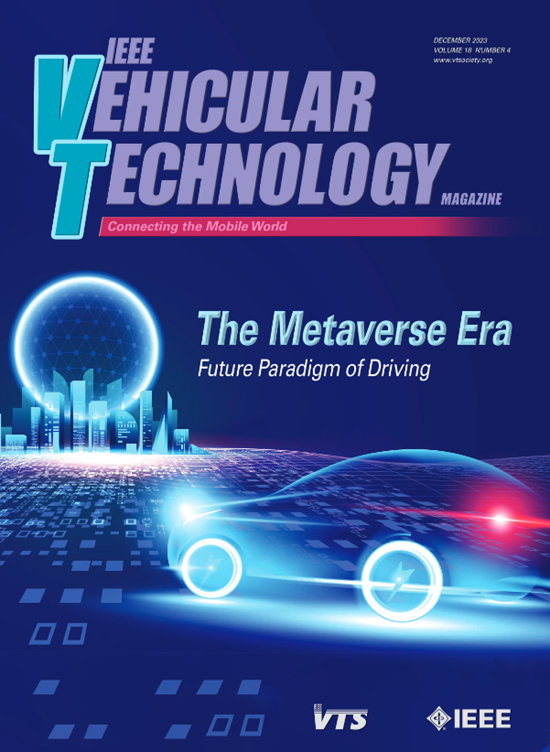互联与自动驾驶汽车及智能交通系统的元宇宙 [特邀编辑的话]
IF 5.8
2区 计算机科学
Q1 ENGINEERING, ELECTRICAL & ELECTRONIC
引用次数: 0
摘要
为了实现这一目标,元宇宙在很大程度上依赖于扩展现实(XR)、物联网和通信技术。由于支持技术的重叠,我们期待互联和自动驾驶汽车应用与元宇宙之间的融合。车联网和自动驾驶汽车是移动平台,具备强大的传感和计算能力,可以增强元宇宙的功能。另一方面,身临其境的元宇宙应用可以改善驾驶员和乘客的途中娱乐和驾驶体验。与此同时,从元宇宙中收集和创建的更丰富的信息也带来了新的挑战,如信息过滤、物体定位、视觉转换等。这些挑战通常是计算密集型的,会给要求近乎实时反应的互联和自动驾驶汽车带来相当大的额外延迟。因此,研究人员提出了边缘和云计算、机器学习和计算机视觉解决方案来应对这些挑战。本文章由计算机程序翻译,如有差异,请以英文原文为准。
Metaverse for Connected and Automated Vehicles and Intelligent Transportation Systems [From the Guest Editors]
To achieve this goal, the metaverse heavily relies on extended reality (XR), IoT, and communication technologies. With such an overlap in supporting technologies, we expect a convergence between connected and automated vehicle applications and the metaverse. Connected and automated vehicles are mobile platforms equipped with significant sensing and computing capabilities that can augment the metaverse. On the other hand, immersive metaverse applications can improve the en route entertainment and driving experience of the driver and passenger. Meanwhile, the richer information collected and created from the metaverse has created new challenges, such as information filtering, object positioning, vision transformation, etc. These challenges are often computation-intensive and bring considerable additional delay to the connected and automated vehicles which demand near real-time reactions. Researchers have thus proposed edge and cloud computing, machine learning, and computer vision solutions to tackle such challenges.
求助全文
通过发布文献求助,成功后即可免费获取论文全文。
去求助
来源期刊

IEEE Vehicular Technology Magazine
ENGINEERING, ELECTRICAL & ELECTRONIC-TELECOMMUNICATIONS
CiteScore
14.10
自引率
1.20%
发文量
66
审稿时长
>12 weeks
期刊介绍:
IEEE Vehicular Technology Magazine is a premier publication that features peer-reviewed articles showcasing advancements in areas of interest to the IEEE Vehicular Technology Society. Our scope encompasses theoretical, experimental, application, and operational aspects of electrical and electronic engineering relevant to motor vehicles and associated land transportation infrastructure. This includes technologies for terrestrial mobile vehicular services, components, systems, and auxiliary functions within motor vehicles, as well as components and systems used in both automated and non-automated facets of ground transport technology. The magazine focuses on intra-vehicular components, systems, and applications, offering tutorials, surveys, coverage of emerging technology, and serving as a platform for communication between the IEEE VTS governing body and its membership. Join us in exploring the latest developments in vehicular technology.
 求助内容:
求助内容: 应助结果提醒方式:
应助结果提醒方式:


